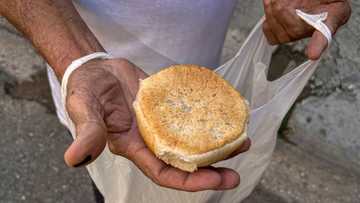Top 20 common weeds in Nigeria every citizen should know
Have you ever wondered what is growing in your garden? Well, with our list of common weeds found in Nigeria, you can finally figure out what that pesky little plant is that is trying to compete with your crops. Learn about some of the weeds that are prevalent in this area of West Africa.
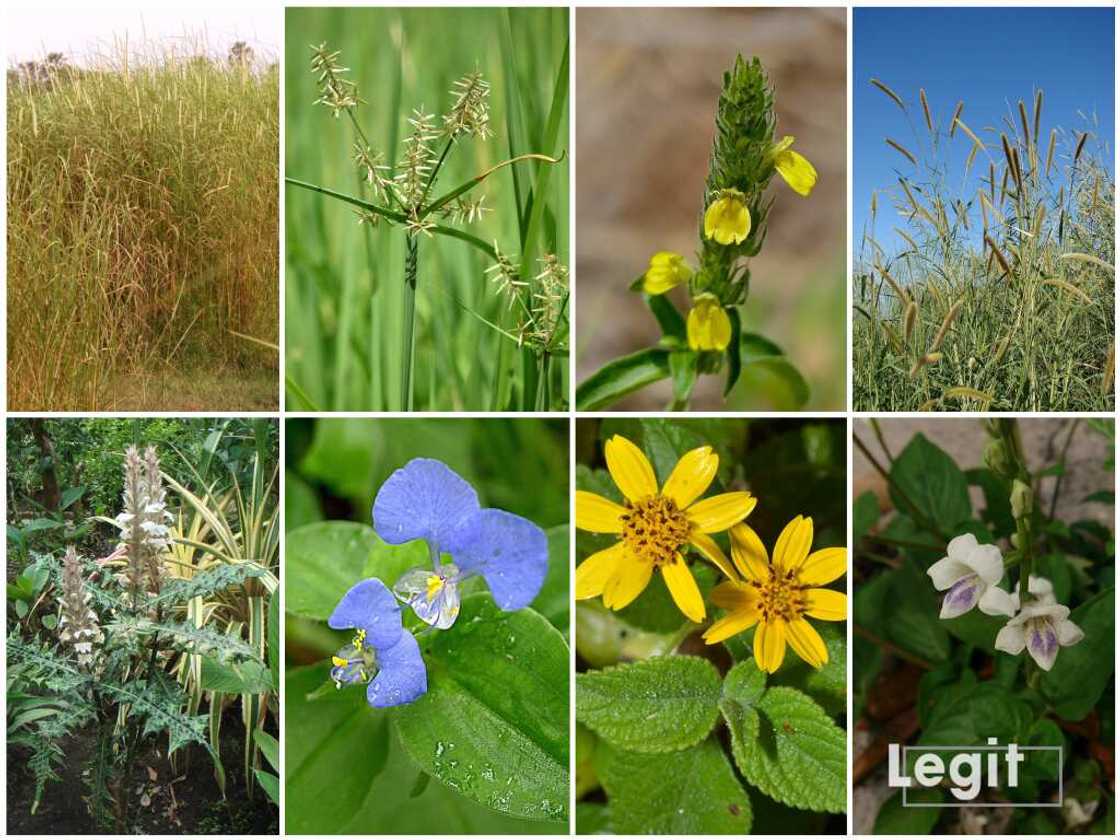
TABLE OF CONTENTS
- 20 common weeds in local areas
- 1. Speargrass (Imperata cylindrica)
- 2. Siam weed (Chromolaena odorata)
- 3. Nutgrass (Cyperus rotundus)
- 4. Milkweed (Euphorbia heterophylla)
- 5. Nuke-Noh (Tridax procumbens)
- 6. Witchweed (Striga genus)
- 7. Couchgrass (Digitaria abyssinica)
- 8. Dayflower (Commelina benghalensis)
- 9. American bushmint (Hyptis spicigera)
- 10. Bahama grass (Cynodon dactylon)
- 11. Wild sunflower (Aspilia africana)
- 12. Elephant grass (Pennisetum purpureum)
- 13. Carpet grass (Axonopus compressus)
- 14. African Club Moss (Selaginella kraussiana)
- 15. African Feather Grass (Cenchrus macrourus)
- 16. African Olive (Olea europaea)
- 17. Buffalo grass (Stenotaphrum secundatum)
- 18. Falsethistle (Acanthus montanus)
- 19. Creeping foxglove (Asystasia gangetica)
- 20. Yellow justicia (Justicia flava)
20 common weeds in local areas
You might be surprised, but there are lots of common weeds in Nigeria. Here and there, you can find these plants (that are not always as useless as you might think) growing next to your crops and in your gardens. We have decided to tell you about some of the most prevalent ones, so that you can know what you are dealing with.
Without further ado, here are the Nigerian common weeds and their botanical name:
1. Speargrass (Imperata cylindrica)
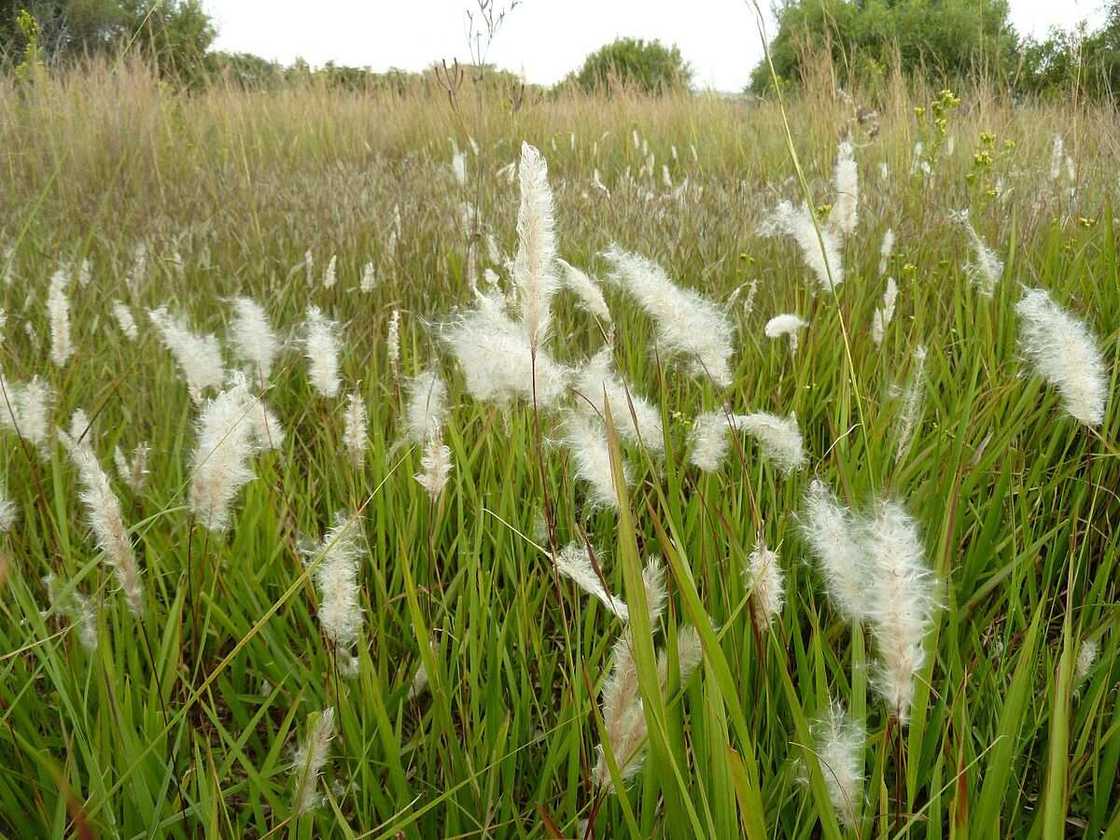
Source: UGC
It is a relatively tall type of grass (growing up to 3 m), and it looks very beautiful, with its long thin stems and fluffy flowers. In some countries, it is used for decoration, roof thatching and even medicine, but in Nigeria, it is mostly considered useless and troublesome, as it hampers agricultural production.
2. Siam weed (Chromolaena odorata)
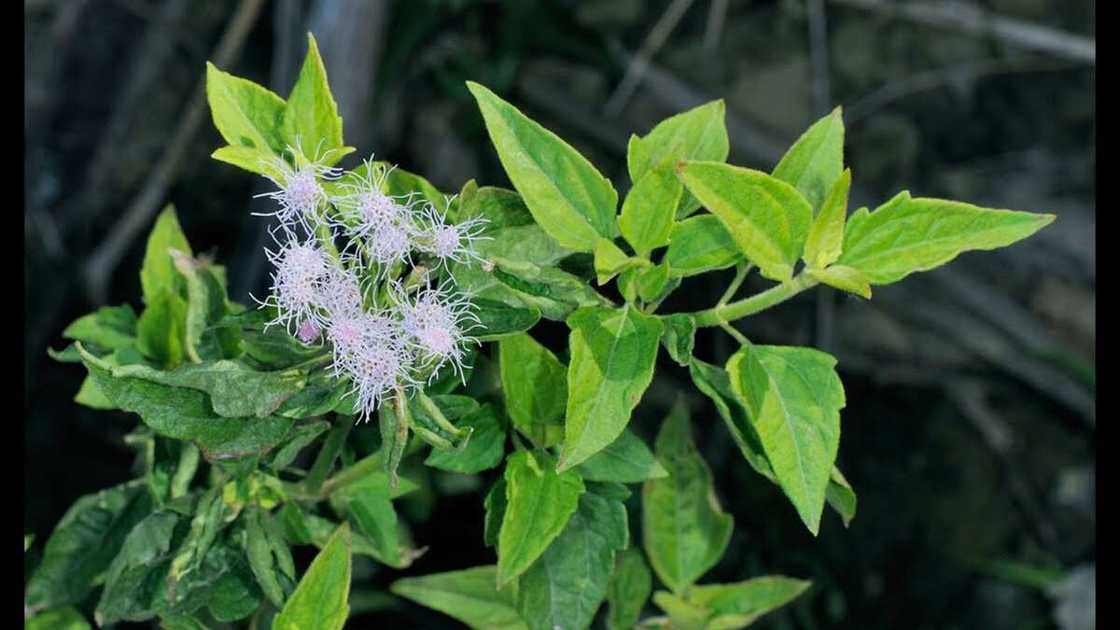
Source: UGC
While it is known as devil weed in some places, this weed is not quite as bad as you think. Of course, it is a mostly useless plant that grows on the land that lies fallow, but it can keep other weeds away that are much harder to get rid of.
3. Nutgrass (Cyperus rotundus)
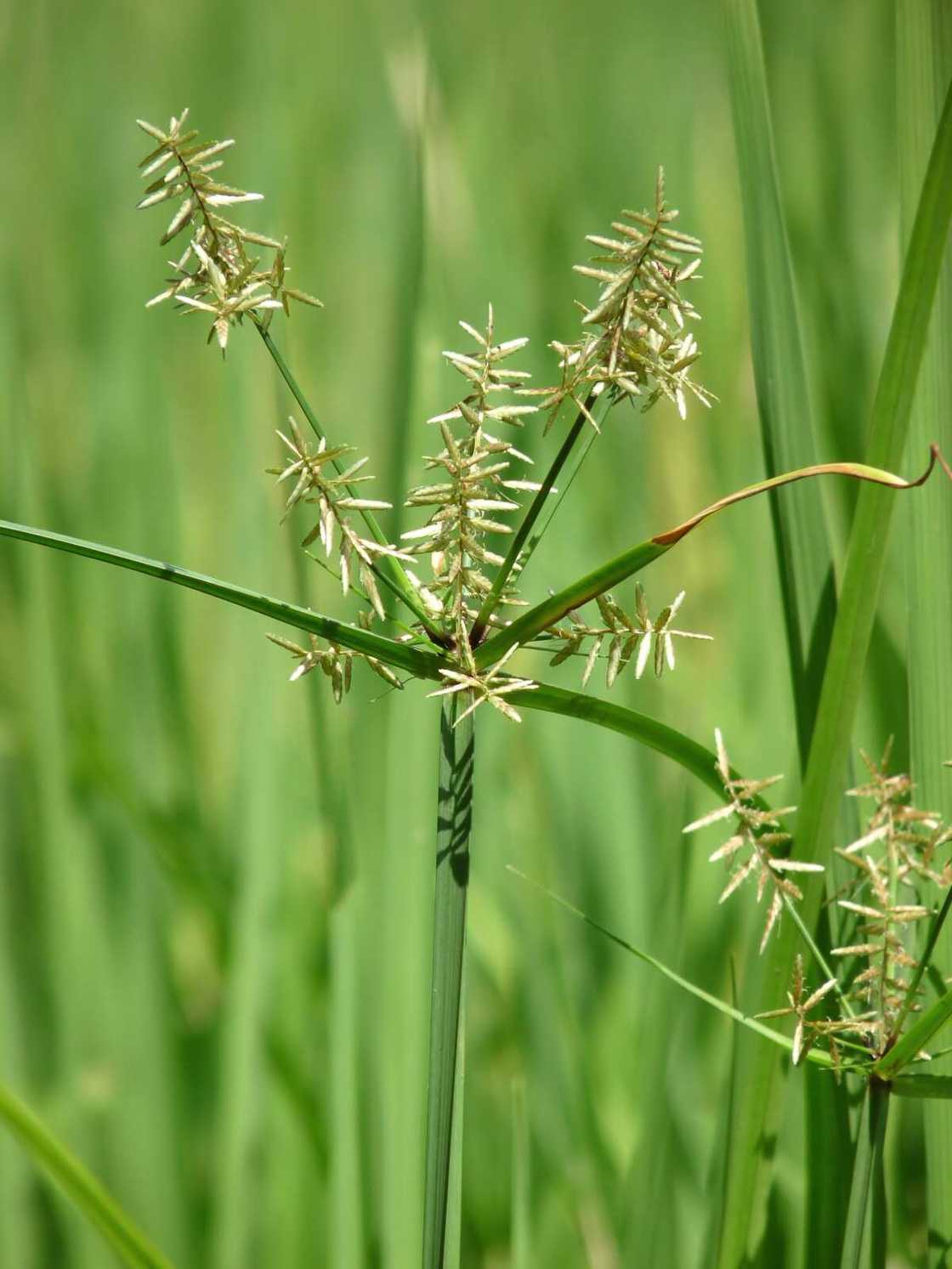
Source: UGC
Even though it has the word ‘grass’ in its name and it even looks like grass, it turns out that nutgrass is a sedge. It is a type of weed with triangular stems and tubers that resemble nuts, hence the name. The plant prefers dry conditions, but it can survive in moist soil, which makes it hard to get rid of, so Nigerian farmers hate it.
4. Milkweed (Euphorbia heterophylla)
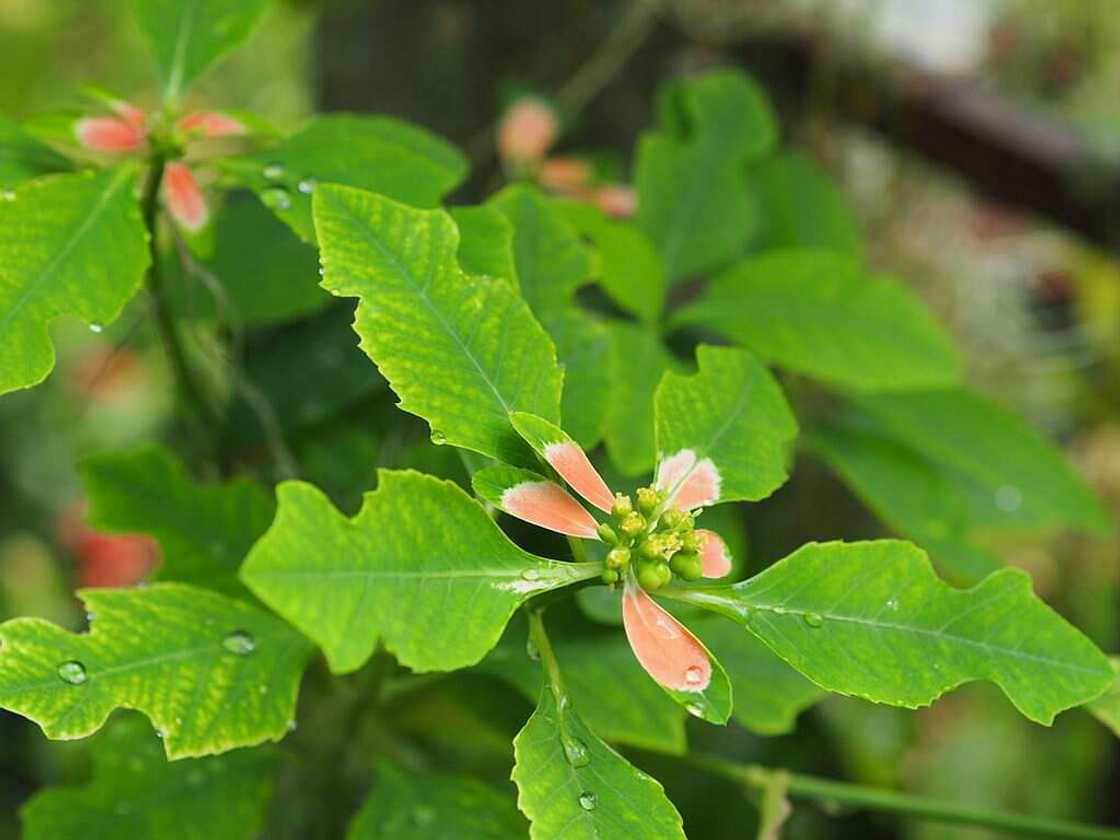
Source: UGC
This plant got its name from the milky white substance it exudes when cut. It has false flowers with no petals, and it might lose colour if it grows as a weed. One of the worst things about this plant is that it might cause anaphylaxis and dermatitis in people who are sensitive to latex, so be careful when you are dealing with it.
5. Nuke-Noh (Tridax procumbens)
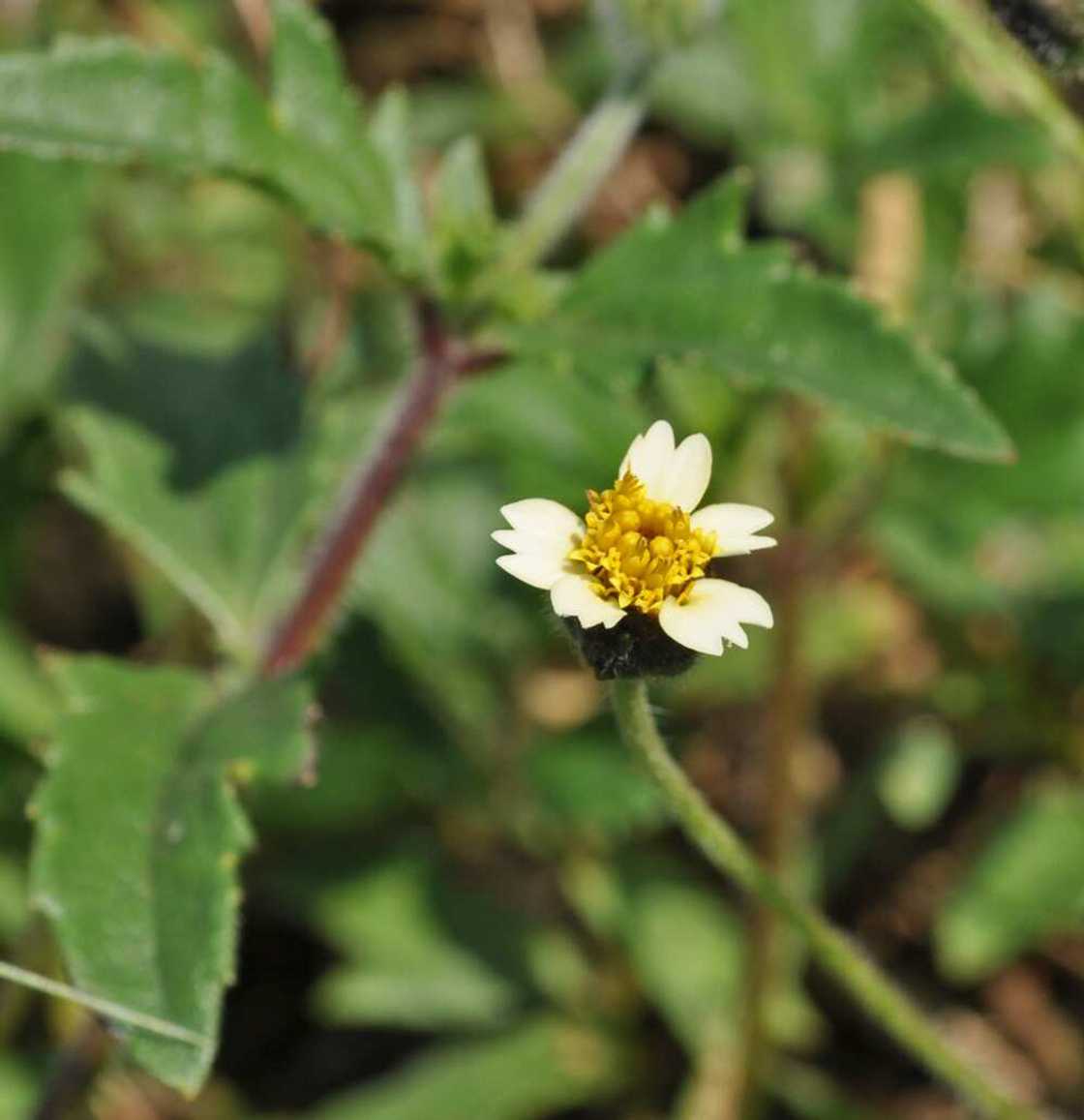
Source: UGC
Despite the fact that most farmers consider it a weed and even a pest, nuke-boh is actually a medicinal plant. It is said to be helpful for people who are dealing with diabetes. It has lovely flowers, which is why it is also called tridax daisy. That said, this weed is really hard to get rid of, as it is quite invasive.
6. Witchweed (Striga genus)
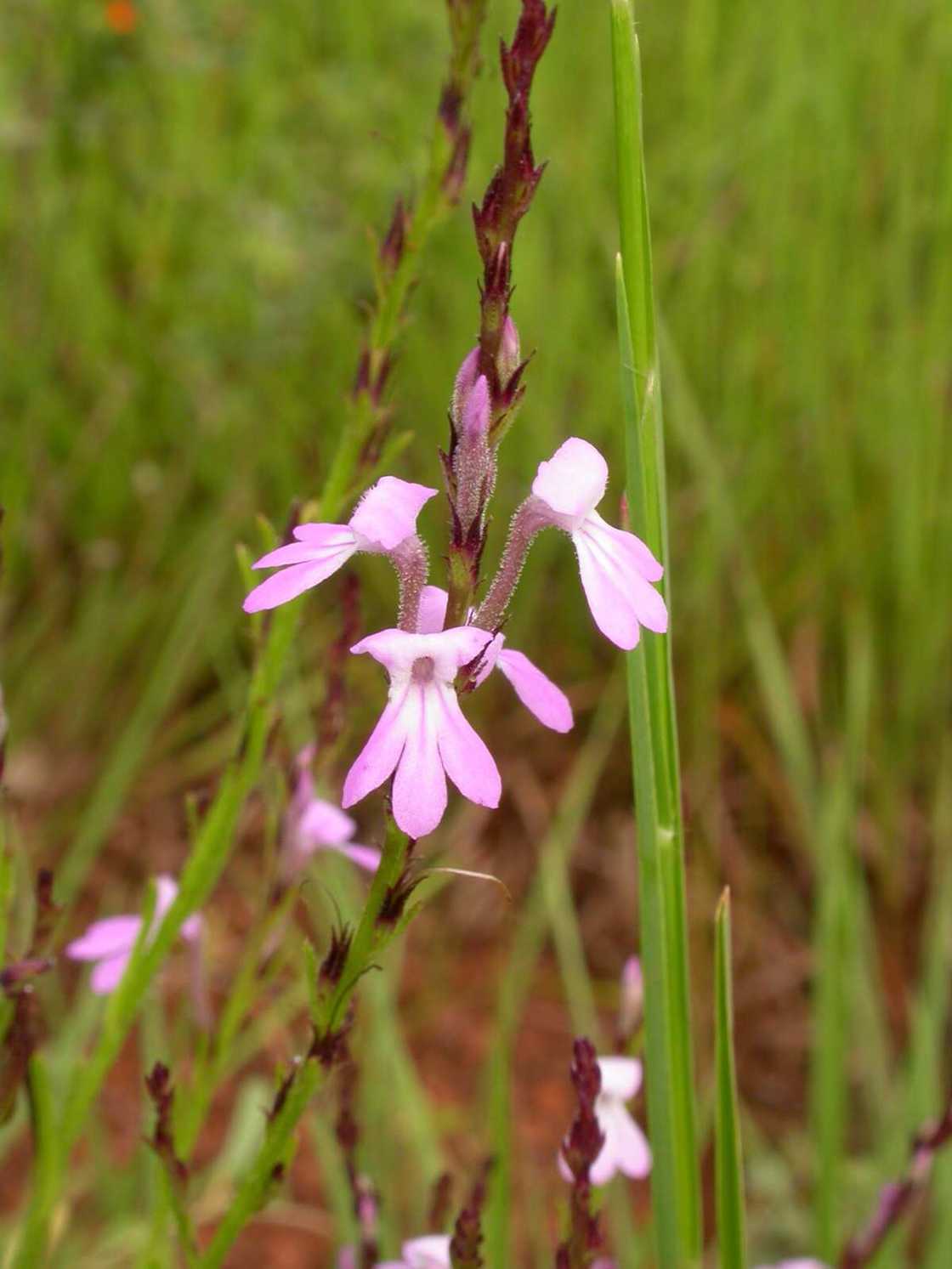
Source: UGC
As you might have guessed from the name, witchweed is not a very pleasant plant. It is a parasite, and it robs other plants of their nutrients by penetrating their root systems. Cereal grains suffer from this weed the most.
7. Couchgrass (Digitaria abyssinica)
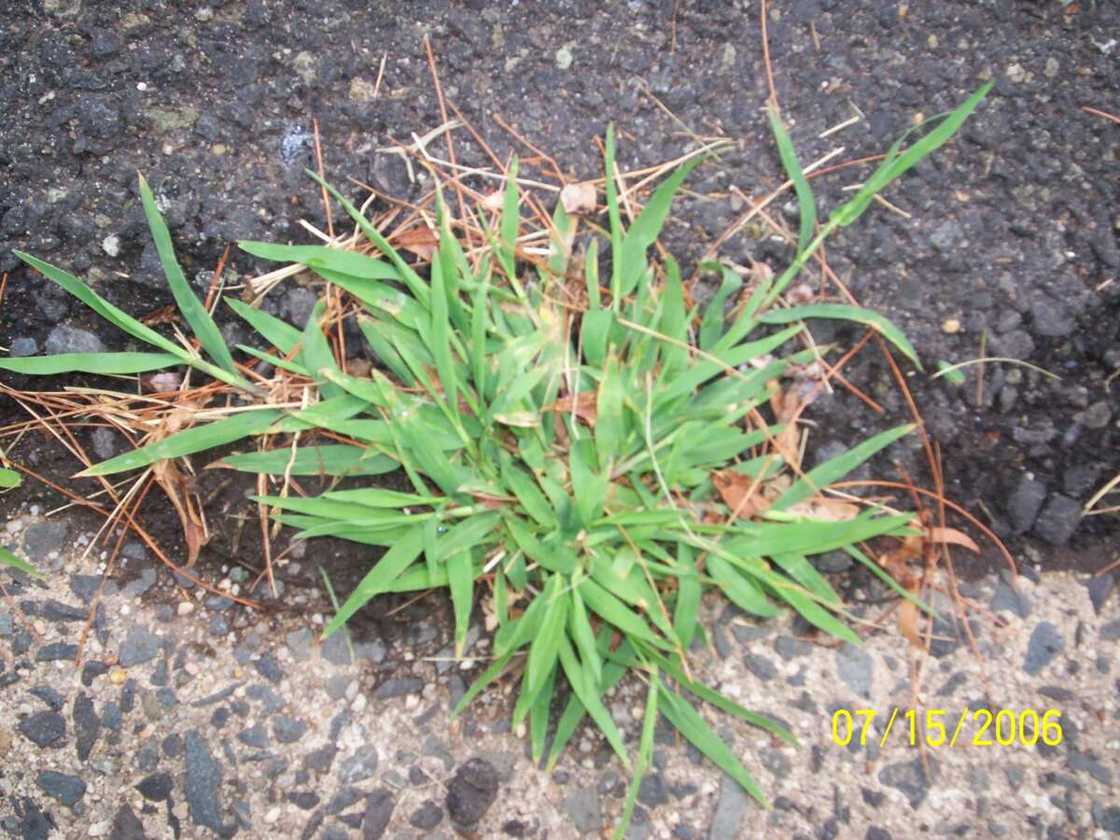
Source: UGC
This is a perennial grass that has long flat blue-green leaves, the roots of which form a mat underground, and that definitely is not good for the crops. This and other species of Digitaria can be found all across West Africa.
8. Dayflower (Commelina benghalensis)
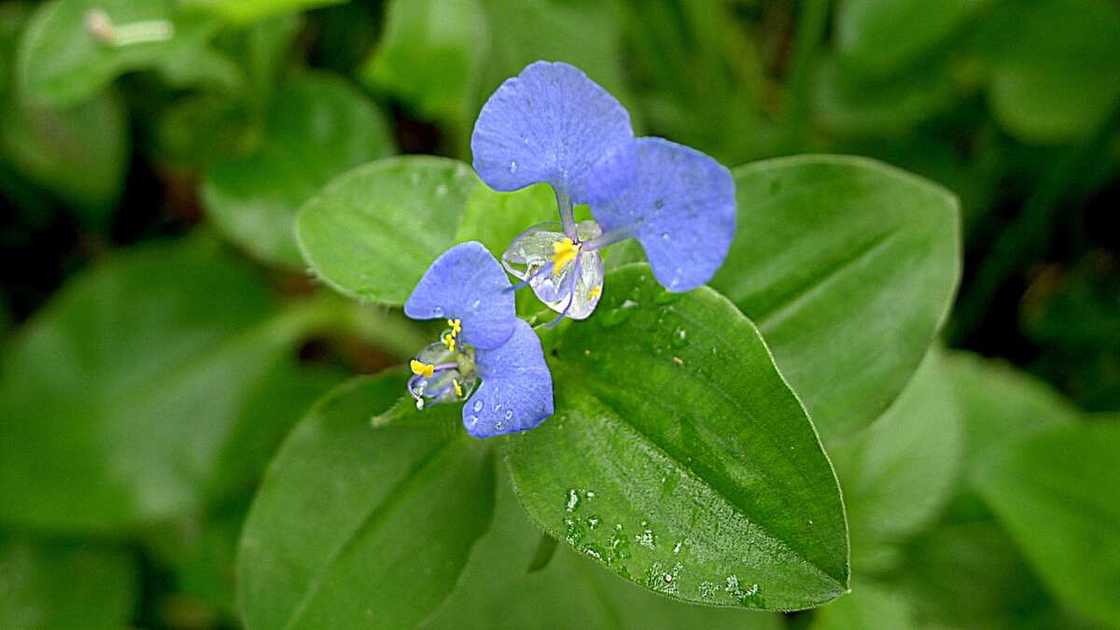
Source: UGC
While the leaves of this plant are considered edible, most farmers do not appreciate seeing it on their fields. It can cause serious harm to crops of peanuts, cassava, coffee and tea, and it can host a harmful virus that can attack the crops.
9. American bushmint (Hyptis spicigera)
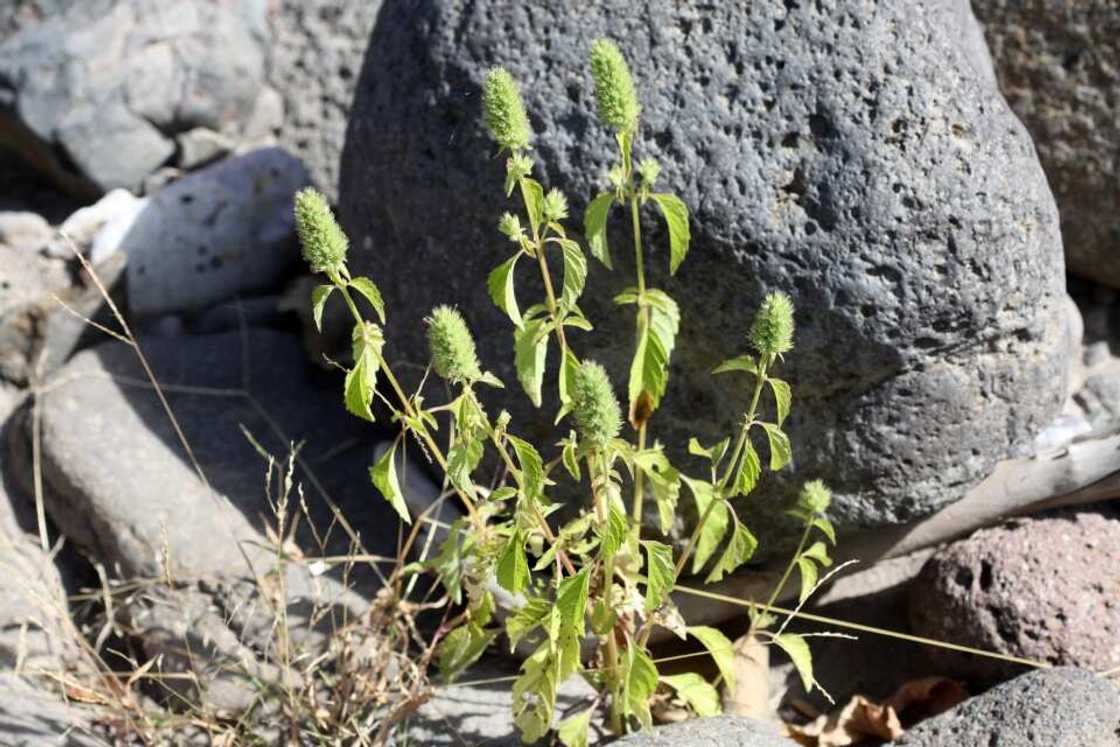
Source: UGC
READ ALSO: Herbs to get pregnant fast
Compared to some of the other common weeds on this list, American bushmint is not that bad. It belongs to the mint family, and it actually has some redeeming qualities. For instance, its oils are considered as insecticide that can control some agricultural pests.
10. Bahama grass (Cynodon dactylon)

Source: UGC
Similarly to nuke-noh, Bahama grass has potential of being used in medicine. It is said to help with constipation and diabetes. It is also useful for grazing animals, so consider it twice before getting rid of this weed.
11. Wild sunflower (Aspilia africana)
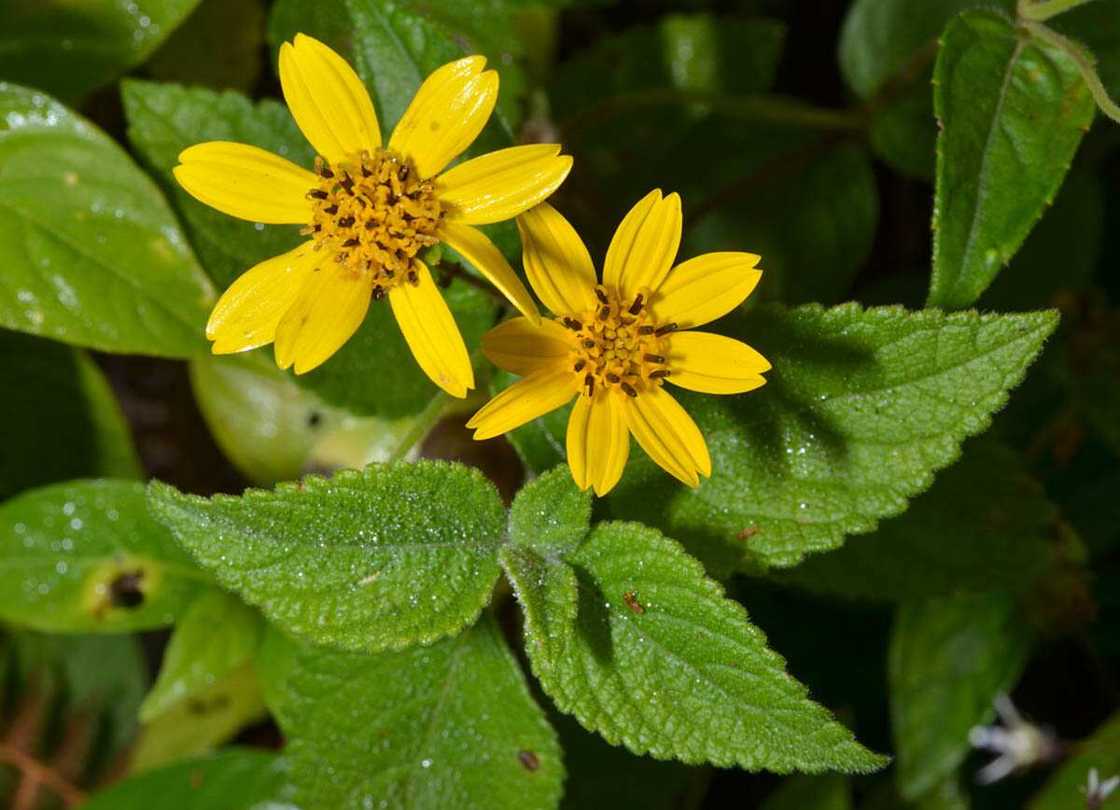
Source: UGC
It seems like a lot of weeds that are found in West Africa (particularly Nigeria) have lots of uses, as this plant is capable of stopping bleeding, accelerating wound healing, treating rheumatic pains and stings from bees or even scorpions.
12. Elephant grass (Pennisetum purpureum)
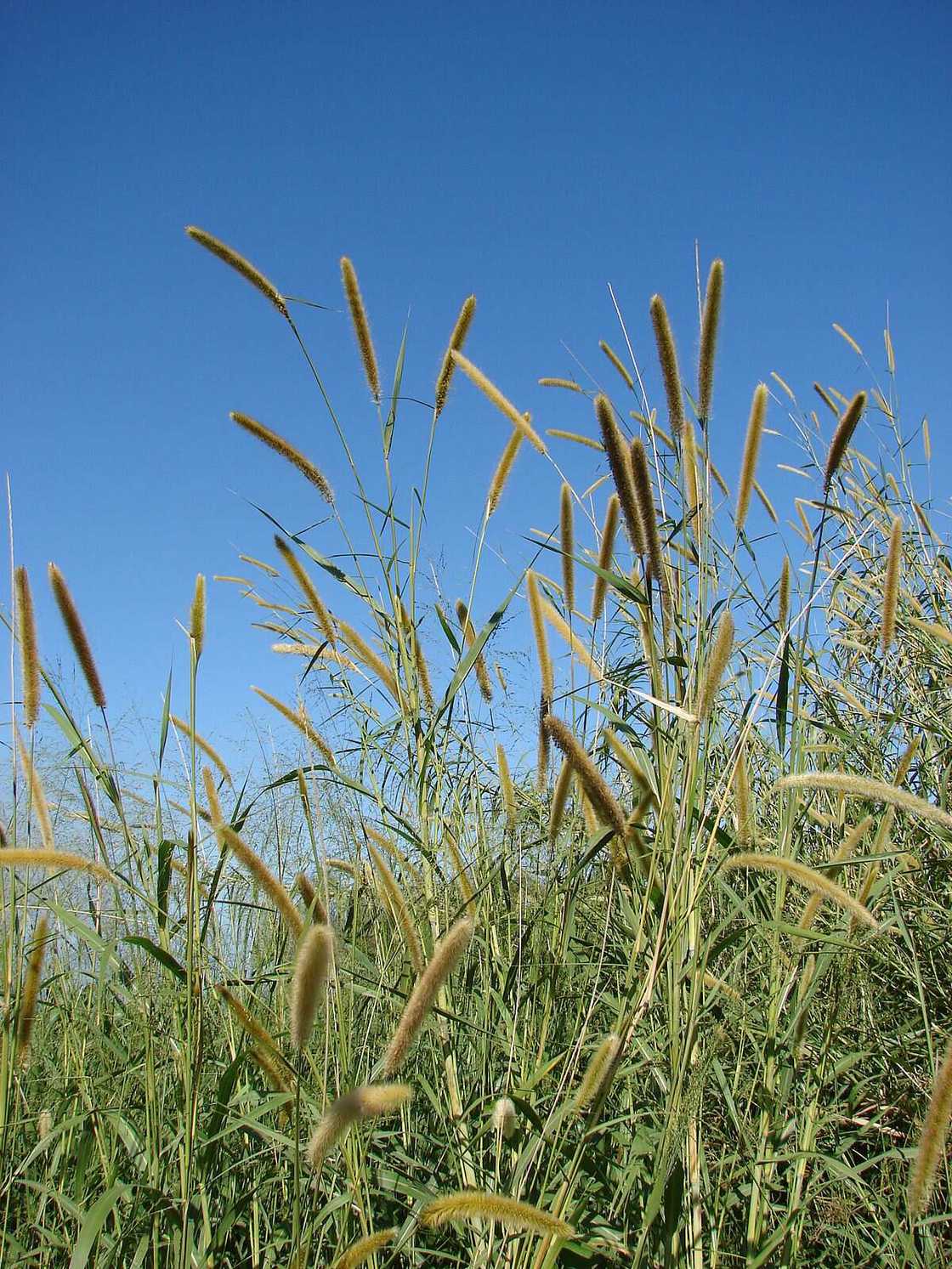
Source: UGC
This plant can survive with little water and nutrients, which makes it perfect for some of Nigeria’s dry lands. However, as most other types of weeds on this list, it has its redeeming qualities, as it can improve the fertility of the soil and keep it from eroding, and it can be used in manufacturing.
13. Carpet grass (Axonopus compressus)
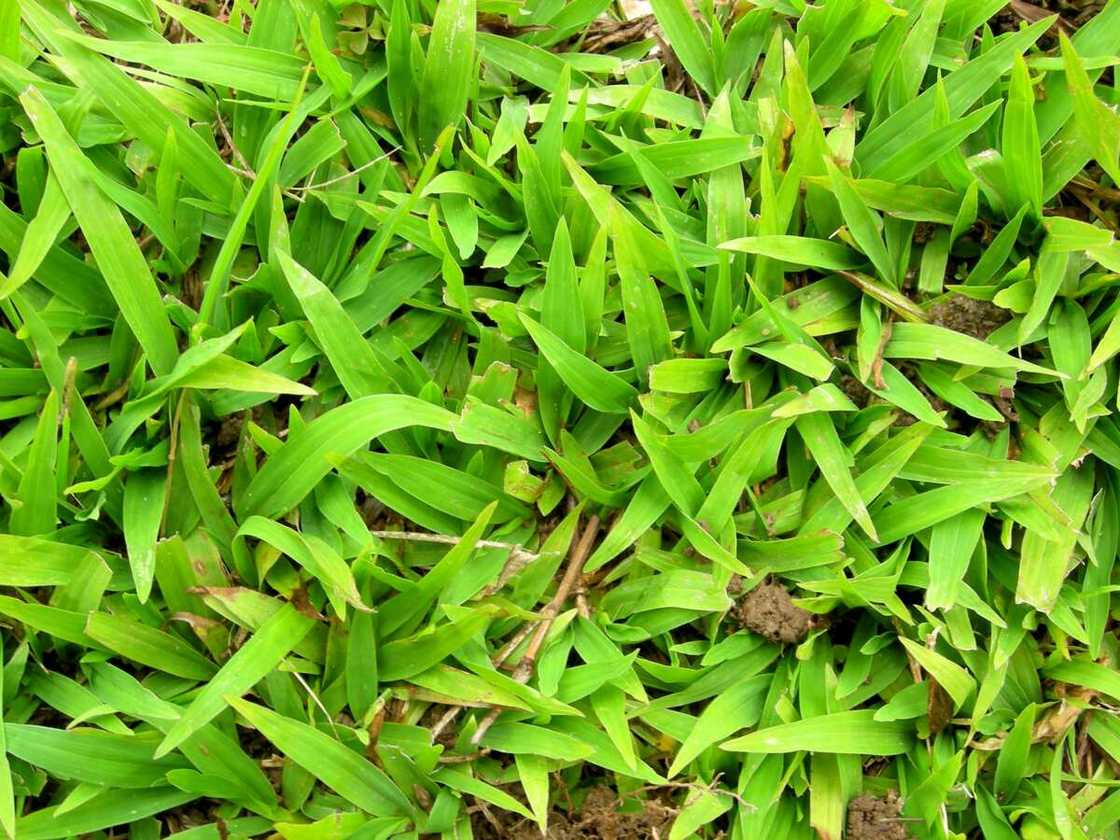
Source: UGC
READ ALSO: Best herbs for weight loss in Nigeria
This weed loves the sun and wet soil, as most crops do, so it is hard to get rid of it. On the other hand, it can be used to beautify non-crop lands, such as parks or roadside areas, as it is fairly low-maintenance.
14. African Club Moss (Selaginella kraussiana)
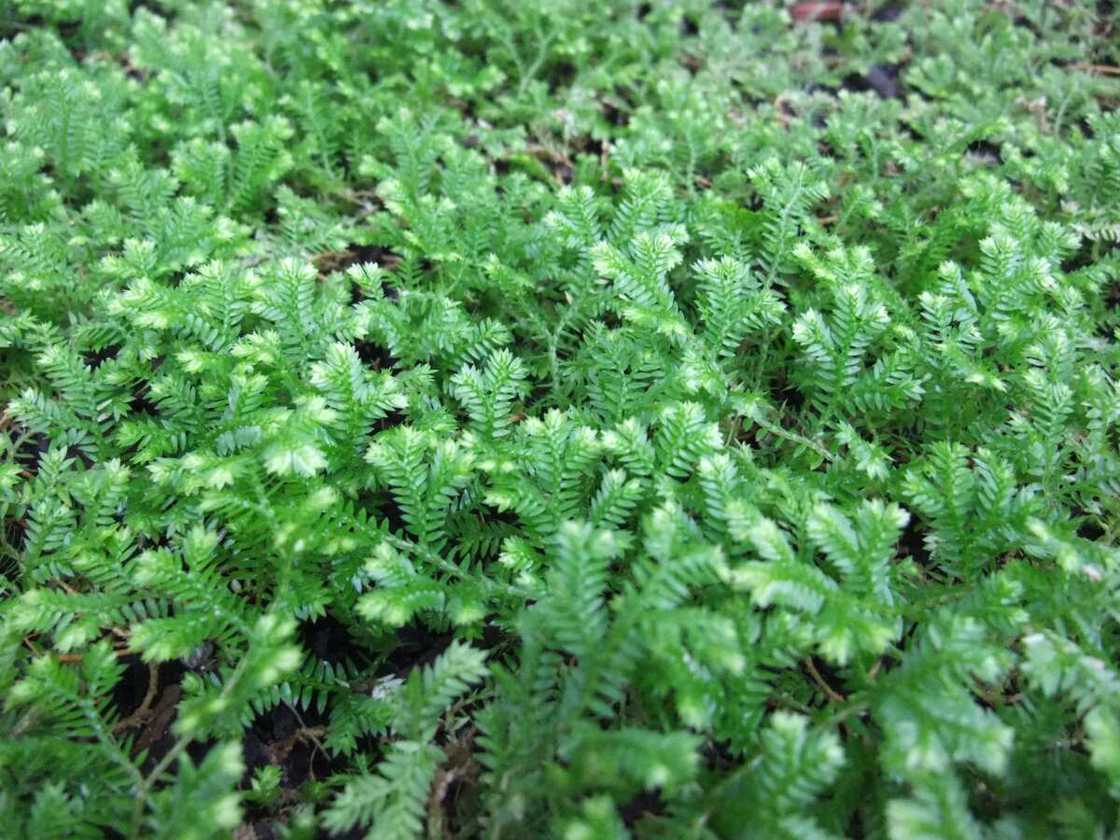
Source: UGC
As the name suggests, this plant is native to Africa, particularly to its tropical and southern regions. It is very adaptable, so good luck getting rid of it. However, it is rather attractive, so you might not even want to :)
15. African Feather Grass (Cenchrus macrourus)
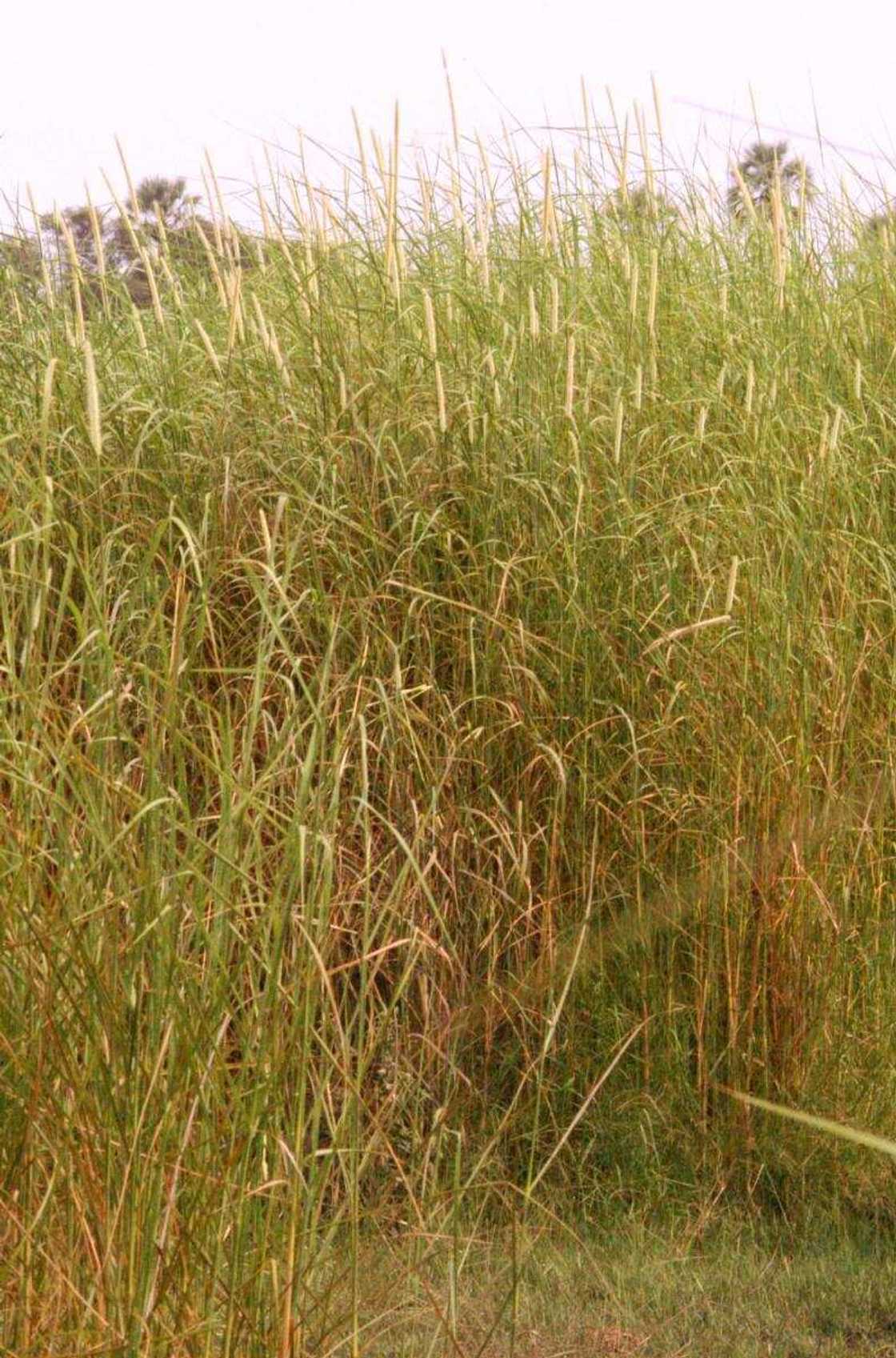
Source: UGC
This grass is also adaptable, as it can thrive in cold and hot conditions, and it can tolerate winds and salty ground. It has strongly ribbed, tough leaves that are light green on top and dark green on the bottom.
16. African Olive (Olea europaea)
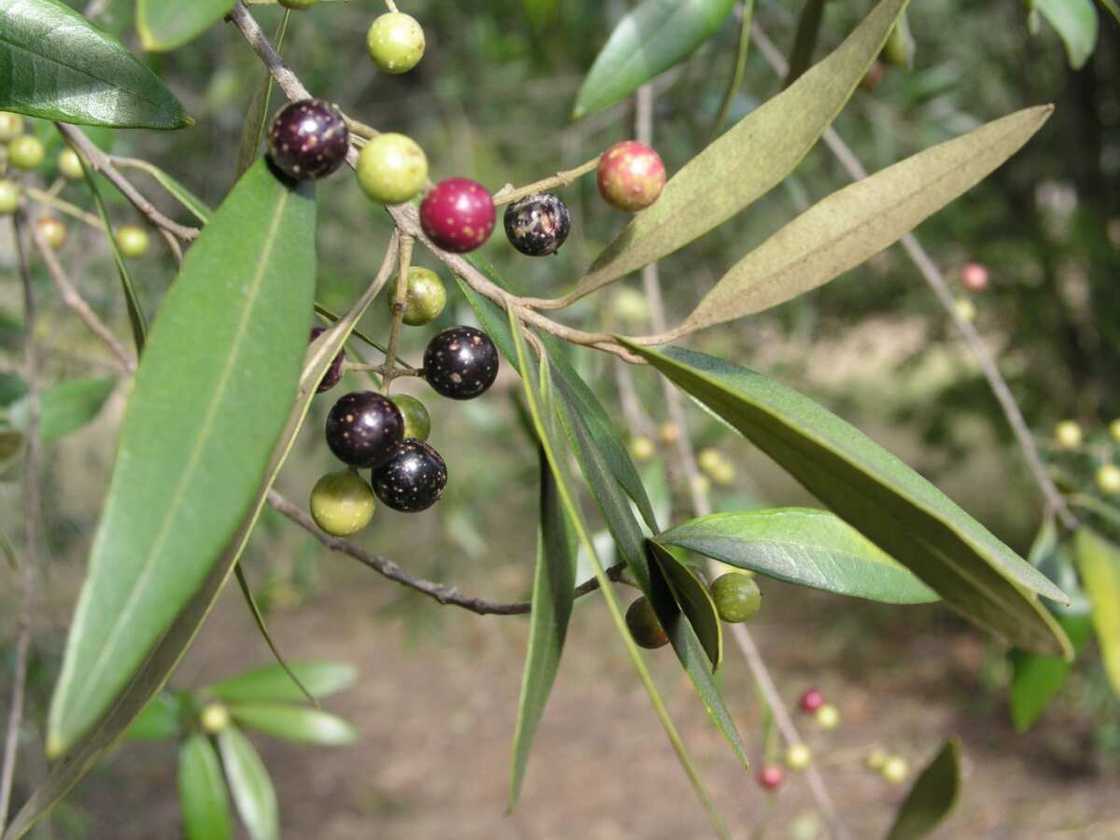
Source: UGC
Even though you might think that this plant might be good, it is, in fact, not. While it resembles a young olive shrub, it is not quite as useful as its other relatives. Moreover, African olive shrubs are very hard to kill, and their seeds are easily spread by birds.
17. Buffalo grass (Stenotaphrum secundatum)
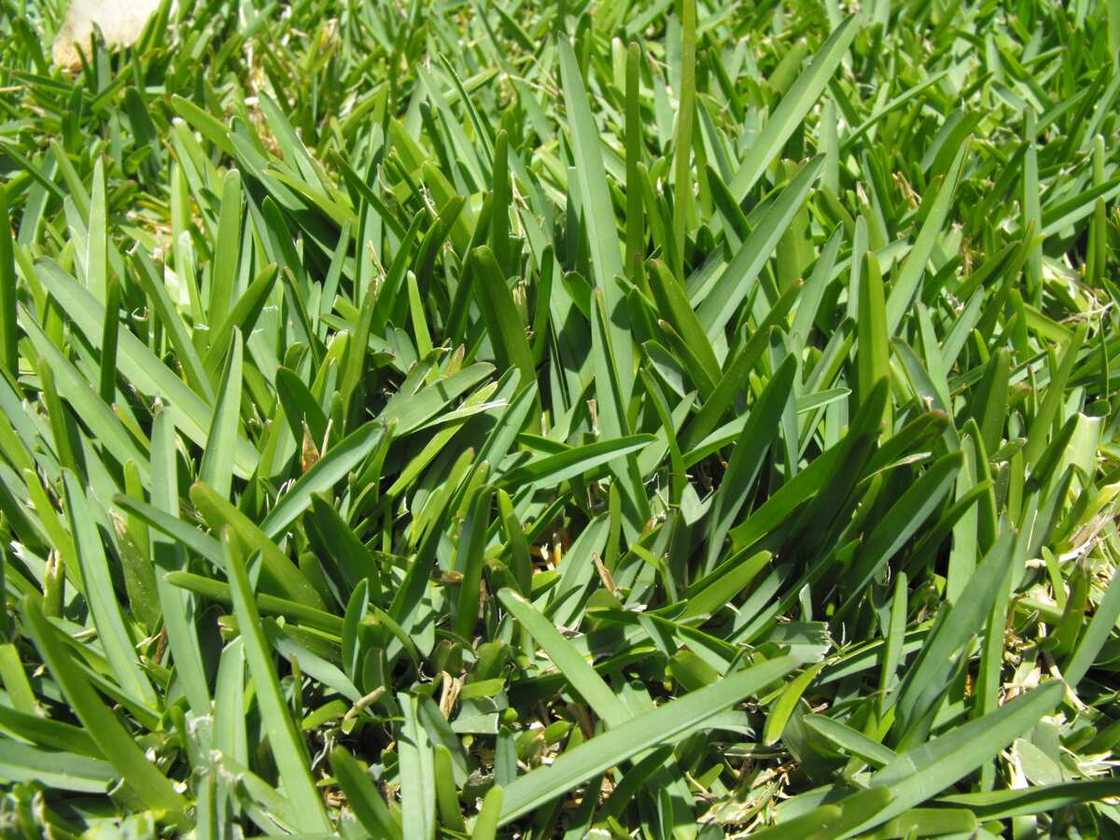
Source: UGC
READ ALSO: Top 10 mango leaves uses you should know
Buffalo grass is known to crowd other plants and weeds, so it is not great if it grows next to your crops. That said, if you plant it in a pasture or ranch, it might be useful for your animals, and it is easy on the eye.
18. Falsethistle (Acanthus montanus)
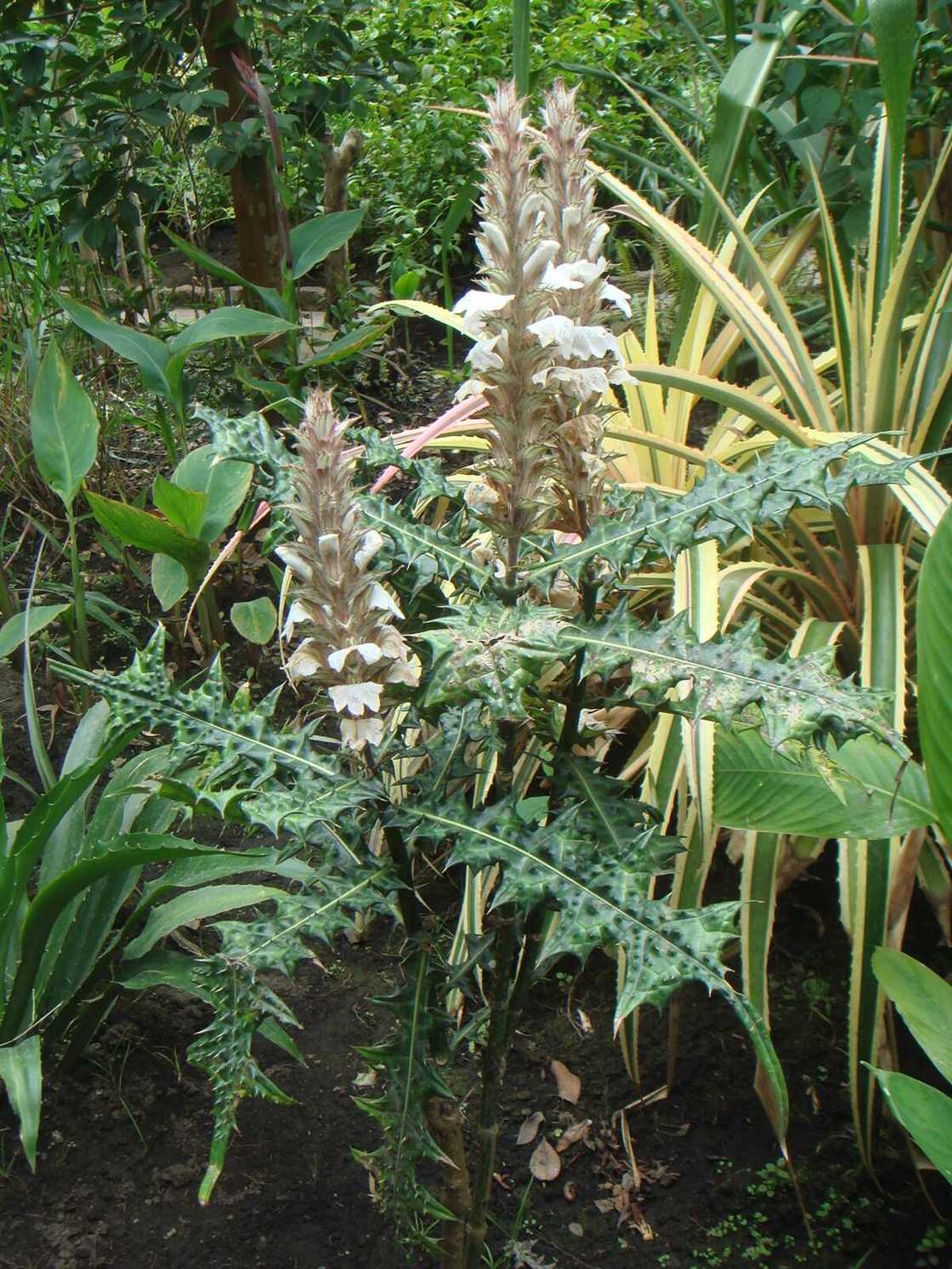
Source: UGC
Unless you have crops in the forest or in the shade, you should not be bothered by this weed. If you do encounter it, protect your hands, as it is very prickly. The plant has rather pretty flowers, so you can enjoy it from afar.
19. Creeping foxglove (Asystasia gangetica)
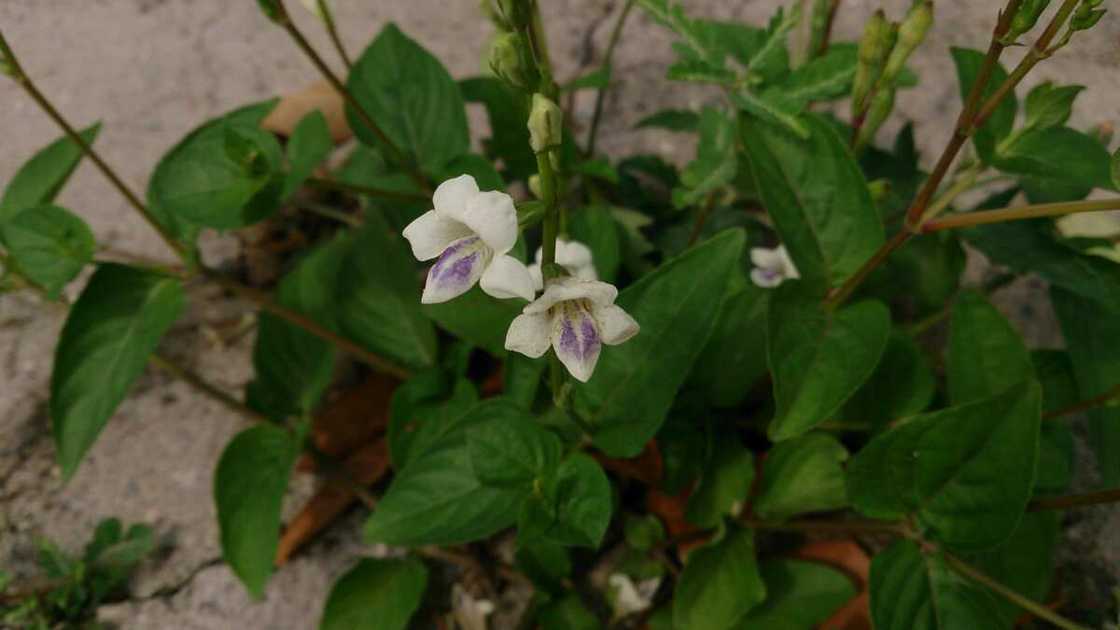
Source: UGC
This plant can mostly be found roadside and in waste areas, which might seem strange as it has such lovely flowers. Even though it is considered a common weed, it should cause no harm to your crops. On the contrary, its leaves can be consumed as food or used in medicine.
20. Yellow justicia (Justicia flava)
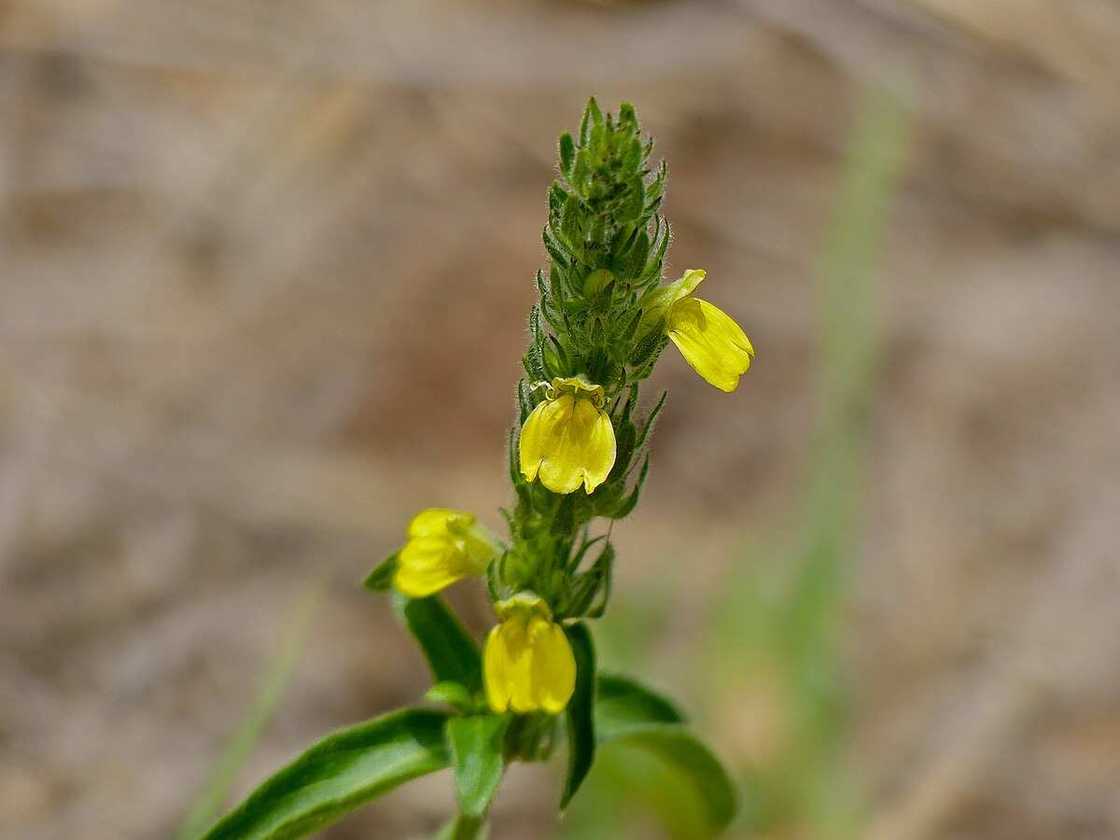
Source: UGC
This common weed that can be found in most soils of compound farms and waste areas is actually very useful. Its leaves can be used in making soups and vegetable salt, and they are also known to be used in medicine, along with the other parts of the plant. So next time you see it, do not destroy it right away.
There are lots more common weeds in Nigeria and West Africa as a whole. If you are interested in them, we recommend you to read ‘A Handbook of West African Weeds’ by C. W. Agyakwa and I. O. Akobundu, as it contains numerous species we could not fit in this article.
Source: Legit.ng


